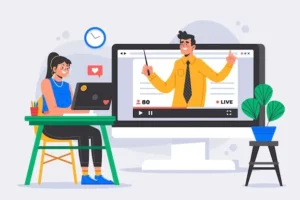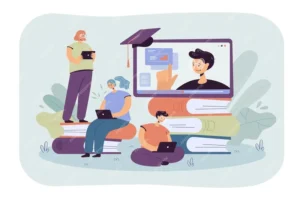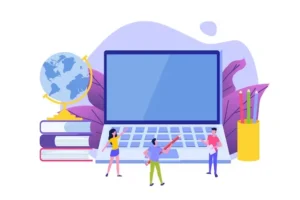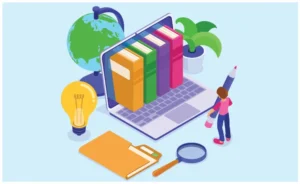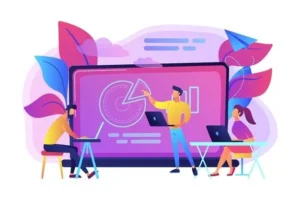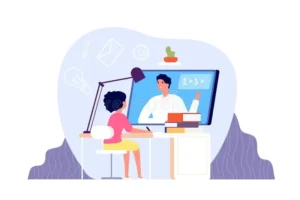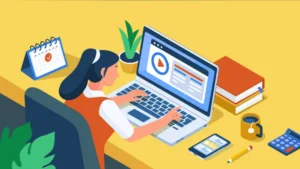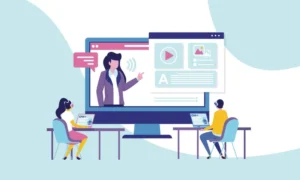Enhancing Online Education Accessibility: Empowering Students with Disabilities

As online education continues to gain prominence, it is essential that educational platforms make significant strides in improving their accessibility features. Ensuring that students with disabilities have equal access to online learning environments is not only a legal requirement but also a moral obligation. In this article, we will explore how online education platforms can enhance their accessibility features to better serve students with disabilities.
- Prioritizing Universal Design
Online education platforms can begin by adopting the principles of Universal Design for Learning (UDL). UDL focuses on creating content, materials, and experiences that are accessible to all students from the outset. By implementing UDL principles, platforms can reduce the need for retroactive accessibility fixes and ensure that all students can access the same content without barriers.
- Offering Multiple Formats for Content
One of the fundamental steps to enhancing accessibility is to provide content in multiple formats. This includes offering downloadable text transcripts for videos, alt-text for images, and properly structured documents for screen readers. These simple additions make online content more accessible to students with visual and auditory impairments.
- Improving Navigation and Usability
Online platforms should prioritize user-friendly interfaces that are easy to navigate with assistive technologies. Features such as keyboard navigation, simple and consistent layouts, and clear labels for interactive elements are crucial. By making the platform easier to use, students with disabilities will find it more accessible and user-friendly.
- Integration of Assistive Technologies
Online education platforms should ensure compatibility with common assistive technologies. Compatibility with screen readers, text-to-speech software, and voice recognition tools is essential. This enables students with disabilities to engage with course materials effectively.
- Enhanced Captioning and Transcripts
Captioning and transcripts play a significant role in ensuring accessibility for students with hearing or visual impairments. Platforms should provide robust captioning options for videos and live lectures and make sure transcripts are available for audio content. Quality and accuracy are paramount to ensure that students receive the intended information.
- Customizable Learning Experiences
Online platforms can allow students to customize their learning experiences, adapting the platform’s settings to their individual needs. For example, offering options to change font size, background color, or text-to-speech preferences can be empowering for students with disabilities.
- Diverse Assessment Options
Assessment methods should be flexible to accommodate students with various disabilities. Platforms should offer alternative ways for students to demonstrate their knowledge, such as oral assessments or alternative project formats. Providing extra time for online exams for students who require it is another essential feature.
- Synchronized Captioning for Live Sessions
For live webinars and interactive sessions, providing synchronized captioning in real-time is vital. This feature ensures that students with hearing impairments can actively participate in live discussions without any delay or misunderstanding.
- Engagement in User Testing
To identify and rectify accessibility issues, online platforms should engage students with disabilities in the testing and feedback process. Gathering insights from the users who face these challenges is invaluable for improving accessibility features.
- Regular Accessibility Audits
Online platforms should conduct regular accessibility audits to identify areas for improvement. Compliance with accessibility standards, such as the Web Content Accessibility Guidelines (WCAG), is critical. Regular assessments can help platforms stay up to date with the latest accessibility features and requirements.
- Incorporating Feedback Mechanisms
Online education platforms should provide accessible feedback mechanisms to allow students to report any accessibility issues they encounter. Platforms should respond promptly to these reports and address the issues to create a better learning environment.
- Comprehensive Accessibility Resources
Offering comprehensive accessibility resources, such as guidelines and tutorials for content creators, instructors, and students, is crucial. By educating the platform’s community on accessibility best practices, it ensures a collective effort to create a more inclusive learning environment.
In conclusion, online education platforms play a pivotal role in shaping the future of accessible learning. By embracing universal design, offering content in multiple formats, improving navigation, and integrating assistive technologies, they can provide students with disabilities equal access to education. Regular assessments, user testing, and feedback mechanisms are key components of creating a more inclusive online education landscape. Enhanced accessibility features are not only a legal requirement but a means to empower all students to achieve their educational goals.

